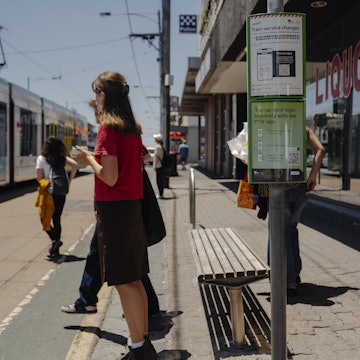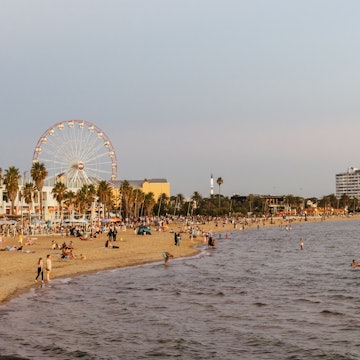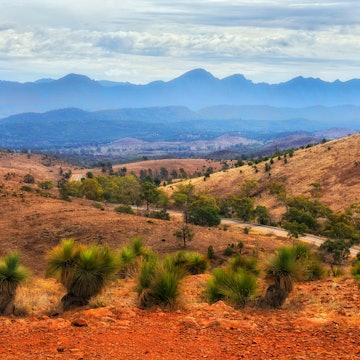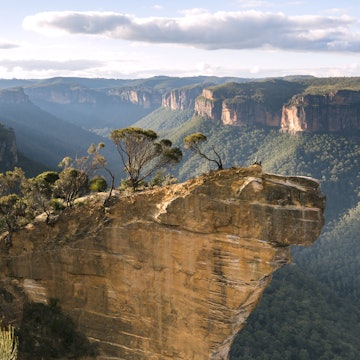

The Great Ocean Road really is great. Here's why. Tom Jastram/Shutterstock
Australia’s most iconic road trip starts west of Melbourne at Torquay and ends at Allansford, on the way to Adelaide. Buckle up for 243km of heart-burstingly beautiful surf strips and quiet coves, pine-lined beach towns and country roads fringed by forests.
Built by soldiers returning from WWI as a government employment program in tough times and as a memorial to fallen comrades, they built not only the world’s largest war memorial, but also one of the world’s greatest drives.
From Melbourne, Torquay is 100km west of the Victorian capital, and the heroes of the road, the Twelve Apostles, are 275km west of the city. Likewise, if you’re in Adelaide, this sinuous coastal road is a slow, but eye-poppingly scenic route to Melbourne. Sure, you can zip on down the Great Ocean Road in four hours - traffic permitting - but why? This is a slow road. A beautiful road. A road that keeps you stopping.
Believe the hype: it’s not called the Great Ocean Road for nothing – it really is great.

When should I go to the Great Ocean Road?
Each season has its particular charms on the Great Ocean Road (GOR), aka the B100.
Winter (June to August) is a truly special time on the road – think knitted jumpers and lashing winds, marshmallowy hot chocolate and the chance to relish the wild seascapes without the summer crowds. From June to September is also when the GOR goes whale-tastic, as the world’s biggest travelers dive and breach along the watery highway; you’ll spot humpbacks, orcas and Southern Right whales on their annual migration along Australia’s southern coastline. Southern Rights love Logans Beach at Warrnambool and it turns into a nursery as mums and bubs loll in the calm waters, watched over protectively by the locals.
Spring (September to November) and autumn (March to May) bring the walkers and hikers out; the coastline is criss-crossed with hundreds of kilometers of trails, including the 110km Great Ocean Walk, from Apollo Bay to the Twelve Apostles.
Summer (December to February) is for beach swims and sunny picnics, and it also brings the crowds as Australians check out of the office and the classroom to head to the coast for the long, hot summer holidays.
How much time should I spend on the Great Ocean Road?
How much time have you got? From start to finish, the road is only 243km long, so technically, you could blitz it from start to finish in a day; and many bus tours from Melbourne are happy to oblige. But why? In two days, you can tick off the big-ticket items, the Twelve Apostles, wildlife watching, swim time and fish and chips by the beach. But you could easily lose a week exploring all the beaches and villages to discover the quintessential cove or the perfect ice cream.
Is it easy to get in and around the Great Ocean Road?
Public transport is patchy along the GOR – to scratch below the surface, you’ll really need a car, otherwise an organized tour will get you between the highlights. Several companies including Go West and Bunyip Tours run affordable day tours from Melbourne, while others operate one-way tours from Melbourne to Adelaide via the GOR, taking two to three days. Otherwise, book a private tour for all the insider tips.
If you’ve got the cash to splash, you can helicopter from Melbourne CBD (city center) to the helipad behind the Twelve Apostles lookout. The closest commercial airport to the GOR is Avalon, on the outskirts of Geelong. A lot of travelers drive from Melbourne along the GOR to Warrnambool or on to Victoria’s prettiest coastal town, Port Fairy, returning nonstop via the quieter inland Hamilton Highway, or the faster Princes Highway.
Big mistake: the Hamilton Highway is dotted with gorgeous little villages chock full of epic vintage shops and cracking country bakeries. Put your foot on the gas and you’ll miss the Elephant Bridge Hotel in tiny Darlington, or if you're firing back on the Princes Highway, Brae at the village of Birregurra, consistently named one of Australia’s top restaurants.
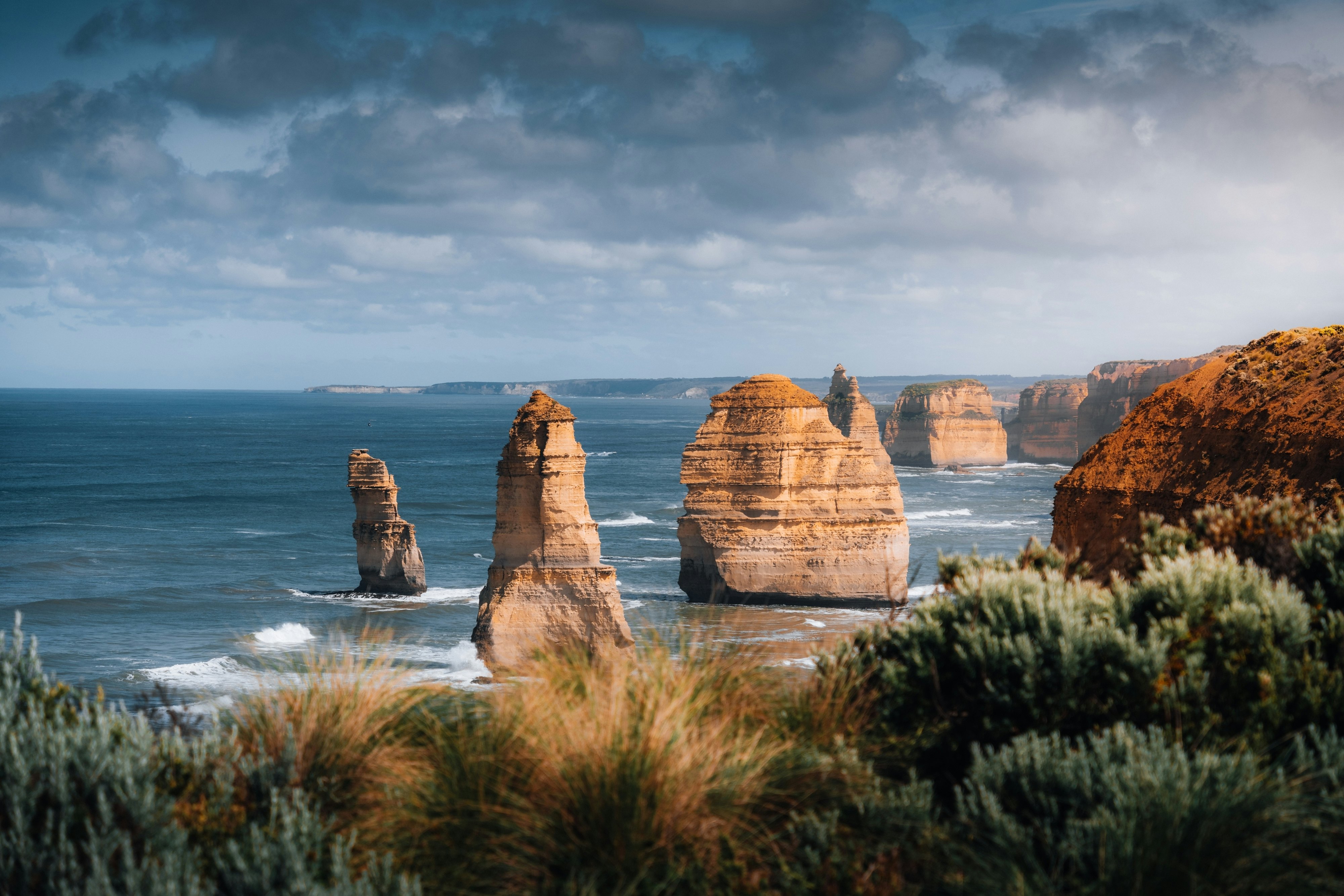
Top things to do on the Great Ocean Road
The Twelve Apostles
You’re here for heroes of the GOR, the Twelve Apostles. Don’t bother counting, only seven limestone sea stacks still stand stalwart against millions of years of raging winds and the punishing Southern Ocean. The main viewing platform, Saddle Lookout, is a 10-minute drive from Port Campbell; it also marks the end of the Great Ocean Walk. The best time for photos is sunrise and sunset; if you’re crowd-adverse, skip sunset and set the alarm for a pre-dawn start.
Walk the Coastline
For true immersion in the landscape, lace up the walking boots and follow one of the many walking trails. The 100km Great Ocean Walk starts in Apollo Bay and takes eight days to complete, while the Great South West Walk is a 250km adventure; both can be broken up into day walks and even shorter, family-friendly leg-stretchers, for day trippers wanting a lungful of salty air. The 2km Koorie Cultural Trail in Anglesea is a bush walk dotted with signposts about the lives of the Wathaurung people, while the 3.4km return waterfall walk to Stevenson Falls is an easy walking track suitable for prams and wheelchairs.

Wildlife Spotting
Watch as little penguins come ashore each sunset from the Twelve Apostles and London Bridge viewing platforms, while you’re guaranteed to spot kangaroos at the Anglesea Golf Course (yep, it’s a thing; sign up for a tour at the clubhouse). Keep your eyes open for Southern Right Whales at Logan’s Beach between May to October, and emus and kangaroos are guaranteed at Tower Hill Wildlife Reserve (free). Sleepy koalas are best spotted at Cape Otway and Lorne.
Just remember, don’t feed or touch wild animals. Keep quiet and keep your distance – koalas in particular have been hounded out of their natural habitat on the GOR by tourists. Otherwise, take a wildlife walk through the Otway bushland with a conservationist nature guide at the ethically run Wildlife Wonders at Apollo Bay.
Connecting with Water
Driving along miles of fabulous coastline, it’s hard not to pull over and leap into the surf. As a rule of thumb, the town beaches on Port Philip Bay are safer than those beyond Cape Otway – check out the patrolled beaches at Lorne, Apollo Bay, Torquay and Anglesea. Once you pass the Cape, it’s a different story, as the landscape, winds and sea all become wilder. For a more relaxed submersion, book a twilight soak in the open-air geothermal hot springs at the Deep Blue Hotel & Hot Springs in Warrnambool. A guaranteed stressbuster, it’s part of the Great Victorian Bathing Trail. Surfers pay their respects to Australia’s most famous surf beach, Bells Beach; the maker of legends is 10km south of Torquay.
Architecture
It’s not all beachside motels and bakeries, the GOR is a sleeper hit amongst architecture buffs. The new Loch Art Gorge blowhole lookout, Poombeeyt Koontapool ("Breath of the Whale") was inspired by a breaching whale, and 8km away, the futuristic main viewing spot to the Twelve Apostles, Saddle Lookout, was designed with the region’s Traditional Custodians of the land. There are five classic lighthouses on the GOR; all are open to visitors, including Australia’s oldest working lighthouse, Cape Otway Lightstation; you can even spend the night in the 1859 sandstone cottages by the lighthouse. For a mid-century hit, visit architect Robin Boyd’s visitor center at Tower Hill, or the beautiful Tae Rak Aquaculture Center at the World Heritage-listed Budj Bim Cultural Landscape. Finally, south of Airey’s Inlet, look – or even stay – at Frank Dixon’s iconic Pole House, perched 40 meters above the landscape, and the nearby timber Memorial Arch, first built in 1939 in remembrance of those who served in World War I.
My favorite things to do on the Great Ocean Road
The Great Ocean Road is loaded with great places to eat; you won’t put a foot wrong following the 12 Apostles Food Artisans Trail between its organic cheesemaker, brewery, vineyard and the fabulous Timboon Fine Ice Cream. Mine’s an orange and cardamon cone. For bush tucker (food native to Australia) or maybe a kangaroo souvlaki, head to the cafe at Budj Bim Cultural Landscape, where eel has been farmed for thousands of years by the Gunditjmara people.
I love walking the quiet bushland tracks of Tower Hill Wildlife Reserve’s dramatic, ancient volcano. I even love the rather ferocious emus, who patrol the reserve’s carparks like nightclub bouncers. Grab picnic supplies from Australia’s most Irish town, Koroit, for an afternoon well spent.

How much money do I need for the Great Ocean Road?
Let’s face it, Australia’s not cheap, and the GOR is no exception. Accommodation is at a premium during summer and the Australian school holidays, so time your trip outside these times. However, the real reason you’re on the GOR is for its natural experiences, and the best - the views, the beaches, the walks, the Apostles - are all gloriously free.
Private room for two at the Apollo Bay Eco YHA: $110
Fish and chips from Fisho’s Torquay: From $25
A really good flat white: From $5
Four-pack of Noodledoof Brewery’s Australian Pale Ale: From $22.50
Scoop of passionfruit meringue ice cream from Timboon Fine Ice Cream: $6.50
One-day small-group tour from Melbourne with Go West: From $149

Watch where you swim
It’s estimated around 700 wrecks are sunk off the shores between Moonlight Head and Port Fairy - reefs, strong currents and smashing surf also make it extremely dangerous for swimmers. Most beaches along the coastline are unpatrolled by lifeguards and simply too rough for even strong swimmers; sadly, fatalities are recorded every summer. Stick to the patrolled beaches from Torquay to Apollo Bay, otherwise, take a dip at the patrolled section of the Bay of Islands, and never, ever swim alone.
DIY on the Great Ocean Road
If you decide to drive the GOR yourself, note that mobile phone reception can be patchy. Also, country Australia shops and restaurants tend to close up early, with last orders into the kitchen by 8pm; don’t go looking for late-night snacks! You’ll find tourist information centers in all the main towns along the way; they can help with information about walks, accommodation, wildlife and history.






